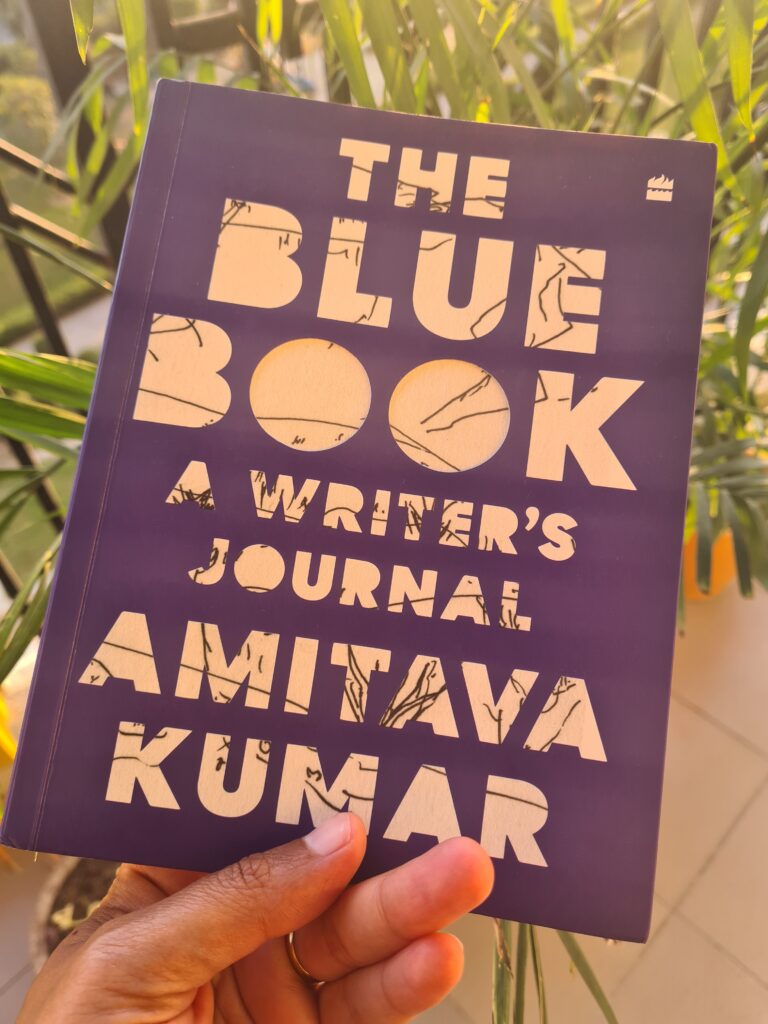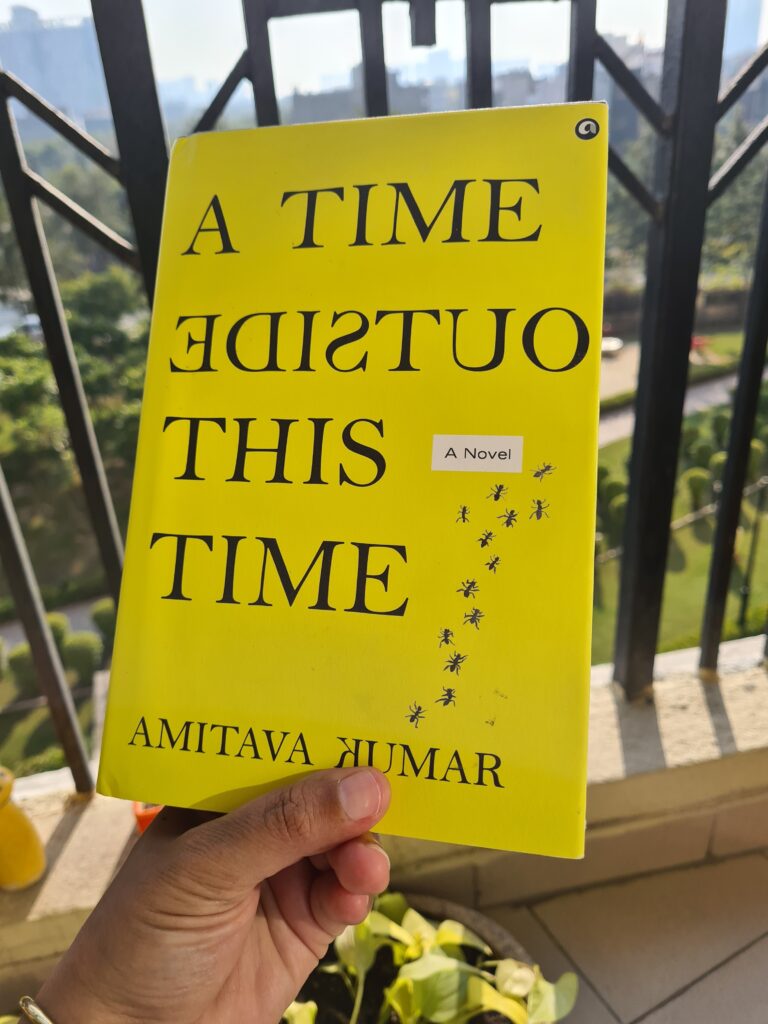Amitava Kumar’s “A Time Outside This Time” and “The Blue Book: A Writer’s Journal”


To write well you need knowledge that is specific.
(p.67 The Blue Book)
…the writer’s job is to reveal where the experiment in living goes wrong.”
(p.40 A Time Outside this Time)
It is a privilege to be able to read a writer’s journal soon after reading his latest novel. Amitava Kumar has a way with words. More than that. It is his ability to be able to pour his creative energy into whatever he is writing; it could be a social media post or an essay or a novel. Every piece of writing seems to be written with equal thought and care. This holds true of his latest offerings. Published a few months apart in India, by two different publishers — Aleph and HarperCollins India.
The Blue Book: A Writer’s Journal has a slow, meandering feel to it. The writer takes the reader through a lovely amble of his musings on writings, his encounters with other writers, the discipline it requires to write, and nuggets of wisdom that other writers may have shared with Amitava Kumar. The book is beautifully illustrated by his watercolour paintings — an art form that he took up during the pandemic. The paintings are vibrant, pure, and he uses bright colours. Curiously, he is constantly experimenting, so there is no fixed style to his compositions. It is impossible to gauge what will come next. But it is the specifics in the painting, whether the detail of a tulip flower or the painting across a newspaper that shows young girls celebrating Holi just above a photograph of the poet, Mahadevi Verma that make Amitava Kumar’s creations all the more interesting. It is his ability to make the reader share immediately his perspective. His way of seeing. Whether the reader has to agree or not is an entirely different matter. But at least the artist has been persuasive enough to highlight his viewpoint. But The Blue Book is also a pandemic journal. Irrespective of all the name dropping and truly wise advice that he shares, it is the astonishing discipline, clarity and peace that is exuded through the book which shines through. It is the gift of time that this wretched pandemic has given to many individuals. It is possible to channel one’s energies into an activity, discover new talents and blossom.
A Time Outside This Time could not be further from the calm The Blue Book exudes. The novel is scattered. Its structure mimics the shattering experience it is to live in this world of fake news and post-truth. Amitava Kumar opts to tell a few stories, blurring the lines between fact and fiction. It is at times hard to tell if the narrator Satya is Amitava or just Satya. Sometimes it is impossible to tell if this is fiction or a diary of events. It is almost as if it is left to the reader to piece together the narrative and make sense of it. The stories that exist are fine by themselves but interspersing them with Satya’s childhood memories of communal violence or of his adulthood, his marriage, his wife Vaani’s conversations makes it dizzying to read. Apparently, this book is an attempt by Amitava Kumar to write in fiction the challenges caused by fake news and truth. It is unclear whether this is meant to be reportage or a novel. At the best of times, a good writer is deeply dependent upon real experiences. It is the author’s craftsmanship that presents the world to the reader through the prism of fiction. Whereas in A Time Outside This Time the preoccupation of the writer to discuss this new post-truth world where fake news dominates is not very convincing since it is the role of the writer to use art to present reality. Isn’t that a form of artifice, fake news if you will? So how does one read A Time Outside This Time? It is not easy to say.
17 Feb 2022
